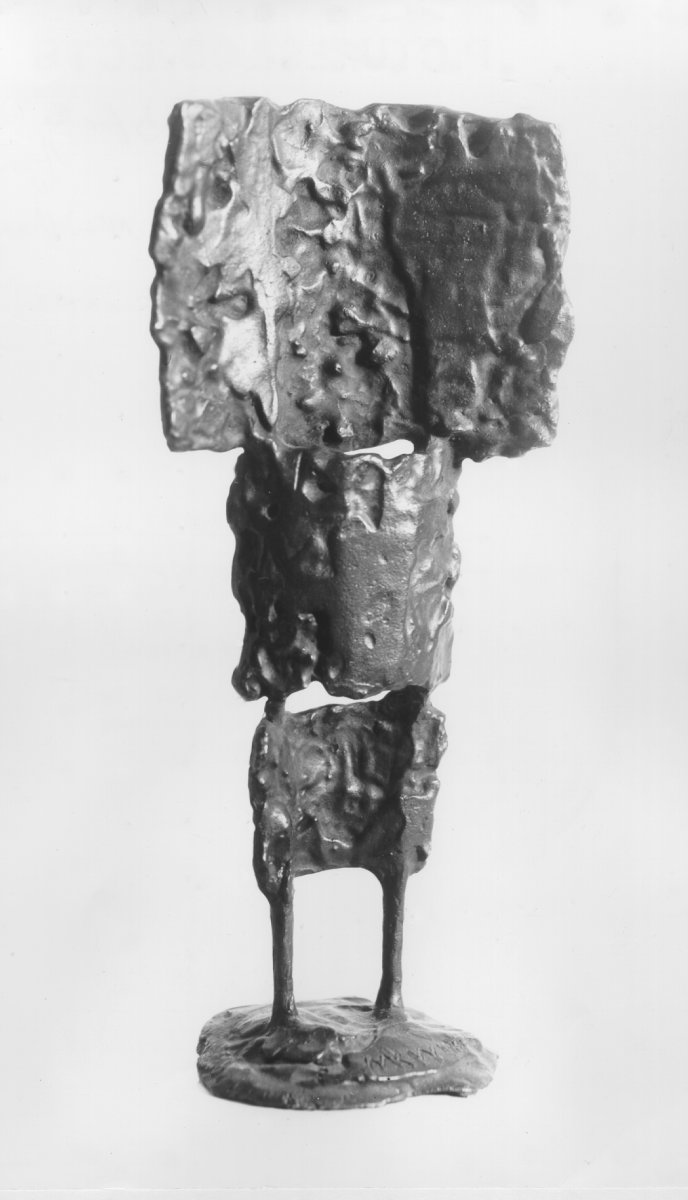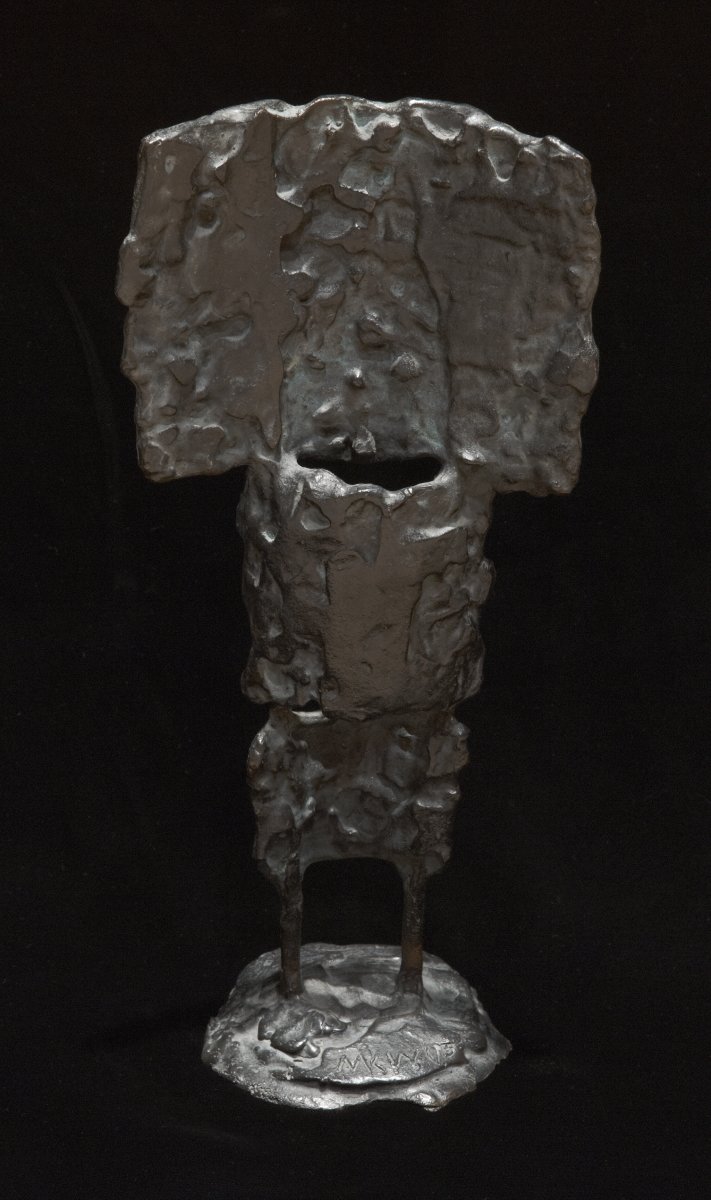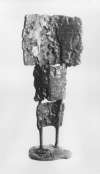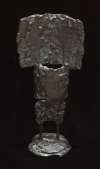Study for the Witch of Agnesi
Frederick Edward McWilliam (1909 - 1992)
Bronze sculpture
-
About the work
- Location
-
Country: Luxembourg
City: Luxembourg
Place: British Embassy
From an edition of five, this sculpture by F.E. McWilliam is a study for The Witch of Agnesi (1959), a large sculpture by McWilliam that is also in the Government Art Collection (GAC). The "witch of Agnesi" is the name given to a curve studied by Maria Gaetana Agnesi (1718-1799) in her book ‘Instituzioni analitiche ad uso della gioventù italiana’ (1748). Agnesi was an Italian mathematician and philosopher, the first woman to write a mathematical textbook, and the first woman to hold a mathematics professorship at the University of Bologna. The curve is known as the ‘Witch of Agnesi’ after Agnesi named it ‘la versiera’ (literally, ‘turning’ in Latin). This word was later mis-translated as ‘l’aversiera’, meaning ‘witch’ or ‘she-devil’ in colloquial Italian.
In an interview with The Times on 3 March 1960, McWilliam commented on the catalytic effect of the mathematical formula on the larger 1959 sculpture:
‘I wanted a name for the concave-convex combination and discovered that the mathematician Maria Asegni [sic] had invented a geometrical curve so-called’.
A sinister and threatening form, the figure represented in both the study and the full-size sculpture was created from three rectangular shapes that increase in size from the base, alternating between being concave and convex. A dramatic suggestion of darkness and menace is emphasised by the roughly cast surface, especially by the markings near the top of the sculpture which create an impression of a hooded figure, with wings and horns. The figure’s owl-like eyes gaze outwards to the distance.
-
About the artist
Frederick E. McWilliam was born in Banbridge, Northern Ireland. He studied at Belfast College of Art and the Slade School of Art in London. From 1931 he worked in Paris, where he became acquainted with the Surrealist movement and in 1938 he joined the British Surrealist Group. During the 1930s his work focused increasingly on sculpture: some of his earliest carvings in wood show the influence of non-Western cultural objects, such as traditional African sculpture. An additional contemporaneous influence was the semi-abstract modernist sculpture of Constantin Brancusi (1876–1957), whose work he would have seen in Paris. McWilliam’s first solo exhibition was in London in 1939. During the Second World War he served with the Royal Air Force, Belfast, spending much time in India. On his return he took up teaching posts at the Chelsea School of Art and the Slade. In 1953 he won an award in the international competition, ‘Monument to the Unknown Political Prisoner’, for which an exhibition was held in London. In 1964 McWilliam received an Honorary Doctorate of Letters from Queen’s University in Belfast. From the early 1970s onwards much of his work reflected the horror and atrocity of terrorist acts in the city. In 1989 a retrospective exhibition of McWilliam’s work was held at the Tate, London (now Tate Britain). A book, ‘The Sculpture of F. E. McWilliam’ by Denise Ferran and Valerie Holman was published in 2012.
-
Explore
- Places
- Subjects
- Materials & Techniques
-
Details
- Title
- Study for the Witch of Agnesi
- Edition
- 1/5
- Date
- Medium
- Bronze sculpture
- Dimensions
- height: 27.00 cm, width: 12.00 cm, depth: 8.00 cm
- Acquisition
- Purchased from Waddington Galleries, November 1965
- Inscription
- front centre of base: MCW 1/5
- GAC number
- 7279



